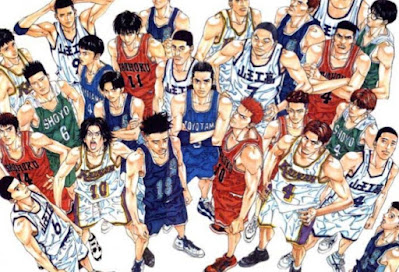Previously in the Mitsuteru Yokoyama's Romance of the Three Kingdoms review:
"So far, the first 22 episodes of Mitsuteru Yokoyama's Romance of the Three Kingdoms are an extremely solid way to experience the early days of the eventual fall of the Han dynasty, as while this is no doubt Liu Bei's story from an overall perspective it still has no problem moving away from him when necessary in order to tell another side of the story that's essential... and I am curious about seeing how this anime continues on from here, post-Lü Bu."
As I mentioned in Part 1, the production of the TV anime adaptation of Yokoyama Sangokushi was a bit of an odd one due to the companies involved. Animation was done by AZ, a no-name studio that you seriously can't find any info on, had previously only worked on most of the Raven Tengu Kabuto TV anime, and seemingly would disappear after this show, never to be seen again. Meanwhile, though Kenji Yoshida's short-lived Yu Entertainment was co-producing this show, which is likely how it managed to get such a talented staff working on it, the primary production company behind it was Dai Nippon Printing, and while DNP has had involvement with anime production beyond Yokoyama Sangokushi, those all seem to be much smaller investments than this was. However, this means that DNP is the primary company that would handle something like licensing... but DNP isn't really equipped to handle things like licensing an anime out, especially internationally. Therefore, another company was brought on to assist with that stuff, so much so that they're even included in the credits of the show itself under "Production Cooperation", as seen in the two ED sequences: Enoki Films.
Yep, if you go to Enoki Films' website you can find Yokoyama Sangokushi there under the title "Quest of Three Kingdoms"; coincidentally enough, Enoki also handles licensing for Shinano Kikaku's Sangokushi film trilogy. Oddly, though, d-rights (now ADK Emotions) also seemingly handled international licensing for Yokoyama Sangokushi in 2016 & 2017, so who knows what the licensing situation is like for this show!
Anyway, aside from the fact that Lü Bu's involvement in the story ended with Episode 22, it was also a good idea for me to stop there for Part 1 of my review of Yokoyama Sangokushi for another reason: Episodes 23 & 24 actually originally aired in Japan as a one-hour special on April 10, 1992. Now, to be fair, this might actually be due more to the fact that the day that originally would have aired Episode 23, April 3, was actually skipped over back during the show's original airing, maybe(?) due to Prince (pre-TAFKAP) performing a concert in the Tokyo Dome that day, which marked the start of his Diamonds and Pearls Tour; it's entirely possible that TV Tokyo aired a live-telecast of that performance, or something. Regardless, these remaining 25 episodes mark a notable shift in the story of Romance, as now that the likes of Dong Zhuo & Lü Bu are gone it results in the rise of the likes of Cao Cao, Liu Bei, & even the Sun Family, eventually led by Sun Jian's second son Sun Quan after the death of his older brother Sun Ce a little over a year after Lü Bu's death. While the Yokoyama Sangokushi anime never truly makes it to the formal foundation of the titular Three Kingdoms (the anime only covers up to 209 AD/CE, while the kingdoms themselves would be officially established between 220 & 222), it really feels as though this second half will act as the "true" set up to that iconic era. Therefore, time to finish up this anime & see if it can follow through on what was established beforehand.
Lü Bu has been defeated & killed following the Battle of Xiapi by the combined forces of Liu Bei & Cao Cao. Seeing the continued value in the existence of the Han dynasty, Cao Cao works as its Prime Minister & lead general in an effort to reunite all of China as it once was, but it's easy to see that there are greater ambitions behind his actions. Meanwhile, the three blood oath brothers of Liu Bei, Guan Yu, & Zhang Fei know too well how dangerous Cao Cao can be & start to look for a way to work against him. However, they need a brilliant strategist to help them in this battle, and eventually find one in the form of the "Sleeping Dragon" Zhuge Liang, who has a grand plan of splitting China between three competing sides. As Cao Cao slowly increases the size of his army to a degree where he looks unstoppable Liu Bei & his allies realize that they need to deal a strong blow to Cao Cao in order to keep his ambitions at bay, and likely need the assistance of the forces of Sun Quan, who rules over the Jiangdong & Wu regions in the South & East, in order to do so.



